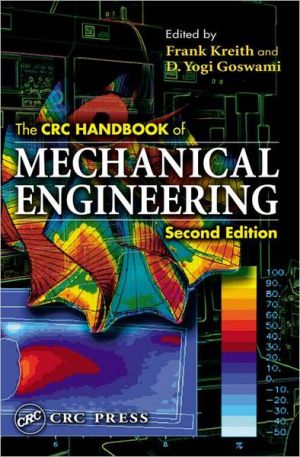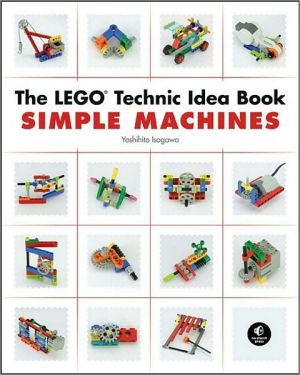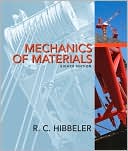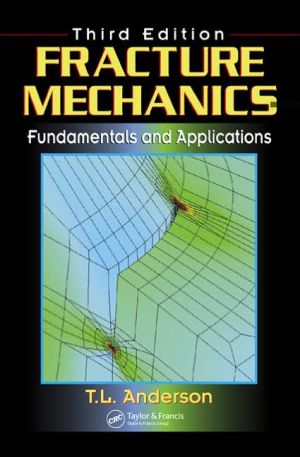The CRC Handbook of Mechanical Engineering
Since the first edition of this comprehensive handbook was published ten years ago, many changes have taken place in engineering and related technologies. Now, this best-selling reference has been updated for the 21st century, providing complete coverage of classic engineering issues as well as groundbreaking new subject areas.\ The second edition of The CRC Handbook of Mechanical Engineering covers every important aspect of the subject in a single volume. It continues the mission of the...
Search in google:
Since the first edition of this comprehensive handbook was published ten years ago, many changes have taken place in engineering and related technologies. Now, this best-selling reference has been updated for the 21st century, providing complete coverage of classic engineering issues as well as groundbreaking new subject areas. The second edition of The CRC Handbook of Mechanical Engineering covers every important aspect of the subject in a single volume. It continues the mission of the first edition in providing the practicing engineer in industry, government, and academia with relevant background and up-to-date information on the most important topics of modern mechanical engineering. Coverage of traditional topics has been updated, including sections on thermodynamics, solid and fluid mechanics, heat and mass transfer, materials, controls, energy conversion, manufacturing and design, robotics, environmental engineering, economics and project management, patent law, and transportation. Updates to these sections include new references and information on computer technology related to the topics. This edition also includes coverage of new topics such as nanotechnology, MEMS, electronic packaging, global climate change, electric and hybrid vehicles, and bioengineering. A. M. Strauss This handbook is large 2,600 pages has eight pages of color plates, and comes with a CD-ROM from Engineering information village. The organization largely follows the sequence courses a mechanical engineering undergraduate takes for an accredited degree. The primary sections are "Mechanics of Solids," "Thermodynamics," "Fluid Mechanics," "Heat and Mass Transfer," "Electrical Engineering Controls," "Energy Conversions," "Air Conditioning," "Design Manufacturing," "Robotics," and "Mathematics.".......Finally, there are only two references to gears in the index. Professionals.
\ \ Chapter 8: Energy Conversion\ Combustion in IC Engines\ Combustion in Spark Ignition Engines\ ...Background. In SI engines, combustion of the fuel-air mixture is initiated by a spark generated between the electrodes of a spark plug. The intake and compression strokes are designed to prepare the mixture for combustion by completely vaporizing the fuel and heating the mixture to just below its auto ignition temperature. This is one reason, in addition to controlling emissions, for the current practice of limiting the maximum compression ratio of SI engines to about 10:1. Near the end of compression, the mixture is well conditioned for combustion and the spark is discharged to initiate the combustion process. For best fuel economy, the combustion process must be completed as close as possible to TDC. This requires that the spark timing be controlled for varying operating speed and load conditions of the engine. Fuel metering and control, according to the engine load requirements, and with minimum variation from cylinder to cylinder and cycle to cycle, is essential for good fuel economy, power output, and emission control of the engine.\ Both carburetors and fuel injection systems are used for fuel-metering control. Because of the superior control capabilities of fuel injection systems, they are nearly universally used today in production automotive applications. Carburetors are used for applications with less-stringent emission requirements, e .g., small engines for lawn and garden equipment. Figure 8.3.12 illustrates the effect of fuel-air ratio on the indicated performance of an SI engine. The equivalence ratio (y) is defined by the ratio Airactual/Fuel-Airstoichiometric. Rich mixtures have fuel-air ratios greater than stoichiometric (y > 1) and lean mixtures have fuel-air ratios less than stoichiometric (y < 1). Optimum fuel economy, coinciding with maximum thermal efficiency, is obtained at part throttle with a lean mixture as a result of the fact that the heat release from lean mixtures suffers minimal losses from dissociation and variation of specific heat effects when compared with stoichiometric and rich fuel-air ratios. Maximum power is obtained at full throttle with a slightly rich mixture, an indication of the full utilization of the air inside the cylinders. Idling, with a nearly closed throttle, requires a rich mixture because of the high percentage of exhaust as residuals that remains in the cylinders. The fuel-air mixture requirement under transient operation, such as acceleration, requires a rich mixture to compensate for the reduced evaporation caused by the sudden opening of the throttle. Cold starting also requires a rich mixture to ensure the vaporization of sufficient amounts of the highly volatile components in the fuel to achieve proper ignition.\ Normal Combustion Process. The combustion processes in SI engines can be divided into two categories, normal and abnormal. The normal combustion process occurs in three stages: initiation of combustion, lame propagation, and termination of combustion. Combustion normally starts across the spark plug pp when the spark is discharged. The fuel molecules in and around the spark discharge zone are ignited and a small amount of energy is released. The important criterion for the initial reaction to be selfsustaining is that the rate of heat release from the initial combustion be larger than the rate of heat transfer to the surroundings. The factors that play an important role in making the initial reaction selfsustaining and thereby establishing a flame kernel, are the ignition energy level, the spark plug gap, the fuel-air ratio, the inital turbulence, and the condition of the spark plug electrodes.\ After a flame kernel is established, a thin spherical flame front advances from the spark plug region progressively into the unburned mixture zone. Flame propagation is supported and accelerated by two processes. First, the combined effect of the heat transfer from the high-temperature flame region and the bombardment by the active radicals from the flame front into the adjacent unburned zone raises the temperature and accelerates the rate of reactivity of the unburned mixture region directly adjacent to the flame front. This helps condition and prepare this zone for combustion. Second, the increase in the temperature and pressure of the burned gases behind the flame front will cause it to expand and progressively create thermal compression of the remaining unburned mixture ahead of the flame front. It is expected that the flame speed will be low at the start of combustion, reach a maximum at about half the flame travel, and decrease near the end of combustion. Overall, the flame speed is strongly influenced by the degree of turbulence in the combustion chamber, the shape of the combustion chamber, the mixture strength, the type of fuel, and the engine speed.\ When the flame front approaches the walls of the combustion chamber, the high rate of heat transfer to the walls slows down the flame propagation and finally the combustion process terminates close to the walls because of surface quenching. This leaves a thin layer of unburned fuel close to the combustion chamber walls which shows up in the exhaust as unburned hydrocarbons.\ Abnormal Combustion. Abnormal combustion may occur in SI engines associated with two combustion phenomena: knock and surface ignition. Knock occurs near the end of the combustion process if the end portion of the unburned mixture, which is being progressively subjected to thermal compression, autoignites prematurely before the flame front reaches it. As a result of the sudden energy release, a violent pressure wave propagates back and forth across the combustion chamber, causing the walls or other parts of the engine to vibrate, producing a sharp metallic noise called knock. If knock persists for a period of time, the high rate of heat transfer caused by the traveling high pressure and temperature wave may overheat the spark plug electrode or ignite carbon deposits that may be present in the combustion chamber, causing uncontrolled combustion and preignition. As a result, loss of power and serious engine damage may occur.\ Knock is sensitive to factors that increase the temperature and pressure of the end portion of the unburned mixture, as well as to fuel composition and other time factors. Factors that increase the probability of knock include (1) increasing the temperature of the mixture by increasing the charge intake temperature, increasing the compression ratio, or turbo/supercharging; (2) Increasing the density of the mixture by turbo/supercharging or increasing the load; (3) advancing the spark timing; (4) increasing the time of exposure of the end portion of the unburned mixture to autoignition conditions by increasing the length of flame travel or decreasing the engine speed and turbulence; and (5) using low-octane fuel and/or maximum power fuel-air ratios. Engine design factors that affect knock in SI engines include the shape of the combustion chamber and the location of the spark plug and inlet and exhaust valves relative to the location of the end portion of the unburned mixture.\ Surface ignition is the ignition of the unburned mixture by any source in the combustion chamber other than the normal spark. Such sources could include overheated exhaust valves or spark plug electrodes, glowing carbon deposits, or other hot spots. Surface ignition will create secondary flame fronts which cause high rates of pressure rise resulting in a low-pitched, thudding noise accompanied by engine roughness. Severe surface ignition, especially when it occurs before spark ignition, may cause serious structural and/or component damage to the engine.\ Combustion in Compression Ignition Engines\ Unlike the SI engine, in which the charge is prepared for combustion as a homogeneous mixture during the intake and compression strokes, fuel preparation for combustion in CI engines occurs in a very short period of time called the ignition delay period. During this period, the fuel injected into the hightemperature air near the end of the compression stroke undergoes two phases of transformation. A physical delay period, during which the fuel is vaporized, mixed with the air, and raised in temperature, is followed by a chemical delay period during which fuel cracking and decomposition occur which leads to autoignition and combustion of the fuel.\ The combustion process is heterogeneous and involves two modes, usually identified as premixed combustion and diffusion combustion. Premixed combustion occurs early in the process when the fuel which has evaporated and mixed with air during the ignition delay period ignites. This mode is characterized by uncontrolled combustion and is the source of combustion noise since it is accompanied by a high rate of heat release which produces a high rate of pressure rise. When the premixed fuel-air mixture is depleted, diffusion combustion takes over, characterized by a lower rate of heat release and producing controlled combustion during the remainder of the process. Figure 8.3.13 depicts the different stages of the combustion process in CI engines.\ The ignition delay period plays a key role in controlling the time duration of the two modes of combustion. Prolonging the ignition delay period, either through engine design factors or variations in operating conditions, will generate a larger portion of premixed fuel-air mixture and will thus tend to increase the premixed combustion mode duration and decrease the diffusion mode duration. This may lead to higher peak cylinder pressure and temperature which may improve thermal efficiency and reduce CO and unburned hydrocarbon (UHC) emissions at the expense of increased emissions of oxides of nitrogen (NO.). Large increases in the ignition delay period will cause high rates of pressure rise during the premixed combustion and may lead to objectionable diesel knock. Reducing the ignition delay period causes the premixed combustion duration to decrease while increasing the diffusion combustion duration. A large reduction in ignition delay may lead to loss of power, decrease in thermal efficiency, and possible deterioration of exhaust emissions. Several factors related to the fuel-air mixture temperature and density, engine speed, combustion chamber turbulence, injection pressure, rate of injection, and fuel composition influence the duration of the ignition delay period.\ Knock in CI Engines. As the combustion process in CI engines is triggered by autoignition of the fuel injected during the ignition delay period, factors that prolong the ignition delay period will increase the premixed combustion duration causing very high rates of energy release and thus high rates of pressure rise. As a result, diesel knock may occur. The phenomenon is similar to knock in SI engines except that it occurs at the beginning of the combustion process rather than near the end, as observed in Sl combustion. Factors that reduce the ignition delay period will reduce the possibility of knock in diesel engines. Among them are increasing the compression ratio, supercharging, increasing combustion chamber turbulence, increasing injection pressure, and using high-cetane-number (CN) fuel. For a more detailed discussion of the combustion process in IC engines, see Henein (1972), Lenz (1992), and Keating (1993).\ Exhaust Emissions\ Harmful Constituents\ The products of combustion from IC engines contain several constituents that are considered hazardous to human health, including CO, UHCs NOx, and particulates (from diesel engines). These emission products are discussed briefly below followed by a description of the principal schemes for their reduction.\ Carbon Monoxide. CO is a colorless, odorless, and tasteless gas that is highly toxic to humans. Breathing air with a small volumetric concentration (0.3%) of CO in an enclosed space can cause death in a short period of time. CO results from the incomplete combustion of hydrocarbon fuels. One of the main sources of CO production in Sl engines is the incomplete combustion of the rich fuel mixture that is present during idling and maximum power steady state conditions and during such transient conditions as cold starting, warm-up, and acceleration. Fuel maldistribution, poor condition of the ignition system, very lean combustion, and slow CO reaction kinetics also contribute to increased CO production in Sl engines. CO production is not as significant in CI engines since these engines are always operated with significant excess air.\ Unburned Hydrocarbons. When UHCs combine with NO, (see below) in the presence of sunlight, ozone and photochemical oxidants form that can adversely affect human health. Certain UHCs are also considered to be carcinogenic. The principal cause of UHC in SI engines is incomplete combustion of the fuel-air charge, resulting in part from flame quenching of the combustion process at the combustion chamber walls, and engine misfiring. Additional sources in four-stroke engines may include fuel mixture trapped in crevices of the top ring land of the piston and outgassed fuel during the expansion (power) stroke that was absorbed into the lubricating oil film during intake. In two-stroke SI engines, the scavenging process often results in a portion of the fresh mixture exiting the exhaust port before it closes, resulting in large UHC emissions.\ The presence of UHC in CI engines is related to the heterogeneous nature of the fuel-air mixture. Under certain conditions, fuel-air mixtures that lie outside the flammability limits at both the lean and rich extremes can exist in portions of the combustion chamber and escape combustion, thus contributing significantly to UHC in the exhaust. Fuel injected near the end of the combustion process, and fuel remaining in the nozzle sac volume at the end of injection, both contribute to UHC emission in CI engines. Engine variables that affect UHC emissions include the fuel-air ratio, intake air temperature, and cooling water temperature.\ Oxides of Nitrogen. Nitric oxide (NO) is formed from the combination of nitrogen and oxygen present in the intake air under the high-temperature conditions that result from the combustion process. As the gas temperature drops during the expansion stroke, the reaction is frozen, and levels of NO persist in the exhaust products far in excess of the equilibrium level at the exhaust temperature. In the presence of additional oxygen in the air, some NO transforms to nitrogen dioxide (NO,), a toxic gas. The NO and NO, combined are referred to as oxides of nitrogen or NO.. The production of NO, is in general aggravated by conditions that increase the peak combustion temperature. In SI engines the most important variables that affect NO, production are the air/fuel ratio, spark timing, intake air temperature, and amount of residual combustion products remaining in the cylinder after exhaust. In CI engines, ignition delay, which affects the degree of premixed combustion, plays a key role in NO,, formation. A larger premixed combustion fraction will produce higher combustion temperatures and higher levels of NO..\ Particulates. Particulates are a troublesome constituent in the exhaust from CI engines. Particulates are defined by the US Environmental Protection Agency (EPA) as any exhaust substance (other than water) that can be trapped on a filter at a temperature of 325 K or below. Particulates trapped on a filter may be classified as soot plus an organic fraction of hydrocarbons and their partial oxidation products. Soot consists of agglomerates of solid uncombusted carbon particles. Particulates are of concern because their small size permits inhalation and entrapment in the lung walls, making them potential lung carcinogens.\ Soot is formed in CI engines under conditions of heavy load when the gas temperature is high and the concentration of oxygen is low. Smoke production is affected by such parameters as fuel CN, rate of fuel injection, inlet air temperature, and the presence of secondary injection....
Sect. 1Mechanics of SolidsSect. 2Engineering ThermodynamicsSect. 3Fluid MechanicsSect. 4Heat and Mass TransferSect. 5Electrical EngineeringSect. 6Mechanical System ControlsSect. 7Energy ResourcesSect. 8Energy ConversionSect. 9Air Conditioning and RefrigerationSect. 10TransportationSect. 11Engineering DesignSect. 12MaterialsSect. 13Modern ManufacturingSect. 14RoboticsSect. 15Computer-Aided EngineeringSect. 16Environmental EngineeringSect. 17Engineering Economics And Project ManagementSect. 18Communications and Information SystemsSect. 19MathematicsSect. 20Patent Law Miscellaneous TopicsAppendicesIndex
\ A. M. StraussThis handbook is large 2,600 pages has eight pages of color plates, and comes with a CD-ROM from Engineering information village. The organization largely follows the sequence courses a mechanical engineering undergraduate takes for an accredited degree. The primary sections are "Mechanics of Solids," "Thermodynamics," "Fluid Mechanics," "Heat and Mass Transfer," "Electrical Engineering Controls," "Energy Conversions," "Air Conditioning," "Design Manufacturing," "Robotics," and "Mathematics.".......Finally, there are only two references to gears in the index. Professionals.\ \ \ \ \ BooknewsIn this reference for the engineer in industry, government, and academia, some 180 articles provide information on such key topics of mechanical engineering as energy conversion, bioengineering, robotics, and the traditional areas of thermodynamics. Appendices provide information on SI units, mathematical and computational methods, and physical properties of gasses, vapors, liquids, and solids. A CD-ROM provides the Internet-delivered subscription service, Engineering Information Village, for 60 days. Annotation c. by Book News, Inc., Portland, Or.\ \








